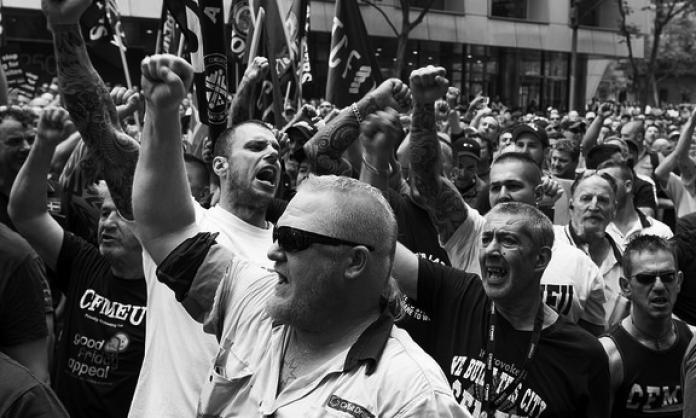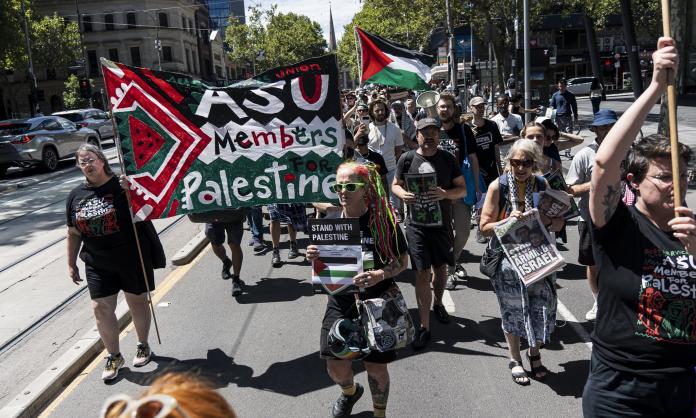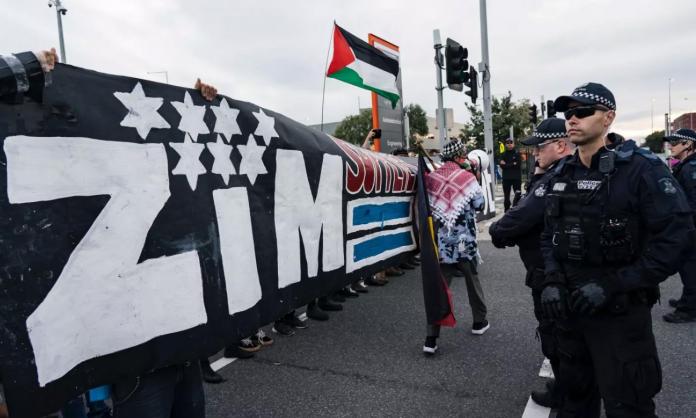“Organise the unorganised!” A century ago, this was one of the key demands that militants raised in the trade unions. It’s a slogan we should revive.
With only 15 percent of the workforce in unions, there’s no shortage of workers who would benefit from a union organising drive. And there is evidence that plenty would join, with the right approach: according to polling last year by Essential Media, around half of all workers in Australia agree that strong unions are a positive, and a very important minority – around 18 percent of workers in non-union workplaces – say they would join if asked. The problem is that our movement is in such a state of decline that no-one has asked them.
It’s not like we have to look too far to find issues to organise around – from penalty rates to insecure work, to legal minimums being violated on a massive scale by some of the largest companies in the country (the latest “revelations” about the daylight robbery carried out by Coles, Woolworths and McDonald’s being among the most obvious examples).
Shrugging shoulders and muttering about the changing structure of the modern working class is one widespread response to the low ebb of the trade union movement. We have to be clear: that is a cop-out. Throughout its existence, capitalism has constantly restructured the economy, and our working lives along with it. This has always thrown up challenges for workers’ organisations: whole new sections of the workforce are constantly being created and need to be organised from scratch. Unless our movement is organising the unorganised, we’re rapidly losing ground.
This has always been the case. A hundred years ago in the US, the union movement appeared to be in terminal decline. Many commentators dismissed the idea that “unskilled” workers in the new mass production industries could ever be effectively organised. But a series of determined organising drives and strikes in the middle years of the 1930s transformed the union movement.
Decades later, fresh organising efforts unionised the growing army of clerical and “services” workers, including teachers, health workers and white collar workers in industries such as insurance and government administration. In each case, a core of militants has organised solidly towards the only real weapon in workers’ armoury – serious industrial action.
So, if we have workers to organise, issues to organise around and a history that points to what needs to be done, what’s the hold-up?
The crucial question is political orientation. Especially at its top levels, the focus in the Australian union movement in 2016 is very much on electoral campaigns, not workplace organisation, least of all workplace organisation aiming at widespread and effective industrial action to assert the power of workers.
It’s not just revolutionary socialists who have this criticism of our movement. One of the best-known figures on the right of the union movement, former ACTU assistant secretary Tim Lyons, recently argued in the literary journal Meanjin that an emphasis on electoral politics rather than industrial power is worsening the “profound crisis” facing the union movement:
“There is no future for trade unionism if people experience it as internet memes and random-issue phone calling and door knocking about how every election is very likely the end of the world. At best this is palliative care for the union movement: it might make you more comfortable while you wait for the end or a miracle, but it’s no cure for the underlying disease. It’s not about rebuilding the power of working people.”
This failure of orientation is not just some chance occurrence: Australia in 2016 is far from the only place and time in which the top levels of our union structures have pointed the movement in exactly the wrong direction. There are powerful conservatising tendencies built into the structure of unions.
Suffocating legal restrictions, the relentless pressure of the capitalist class and the conservatising influence of a working life lived, in large part, inside industrial tribunals, union offices and parliamentary lobbies all play a role in creating a dominant politics of class compromise that hinders rather than promotes the sort of aggressive industrial strategy that can turn our movement around.
Past union revivals have depended on a “militant minority” of workers who can push struggles forward when the established leaders fail to give the lead required. Overwhelmingly, the activists at the core of this militant minority have been informed by revolutionary, working class politics. Splits in the union hierarchy, and sharp struggles provoked by employers pushing too far – especially when they cut out the role of the union officials entirely – can lead to a fight back. But throughout history, a general revival in our movement has always been tied to the intervention of radical political forces into these struggles.
After the defeats of the 1890s, it was socialist and syndicalist militants who rebuilt the union movement in Australia in the first decade or so of the 20th century. Communist Party members and sympathisers played a crucial role in the struggles of the 1930s that rebuilt after the defeats at the start of that Depression decade. Various stripes of socialists and communists were vital to the push from below that culminated in the colossal rolling general strike that shook Australia in May 1969, freeing Communist union official Clarrie O’Shea from a Melbourne jail and breaking the legal shackles (the “penal powers”) that had largely kept unions in check for a generation after World War Two. Students who radicalised on the campuses in this period played a vital role in changing the face of unionism in white collar industries in the 1970s and beyond.
The absence of this sort of militant minority in Australia today is a crucial fact in explaining the downturn in industrial action – a fact overlooked by every piece of mainstream commentary on the state of the labour movement (including, not surprisingly, Tim Lyons’).
Socialist Alternative can’t single-handedly create this militant minority. In particular workplaces and industries, we can demonstrate in practice the positive role that socialist militants can play. Most importantly for the long term, this activity can be one part of building up socialist political forces. It’s this that can lay the groundwork needed to cohere a militant minority that can push our unions towards rebuilding workers’ power in the workplace.











